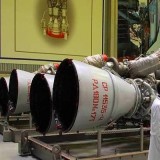Le operazioni “avioportate”: cosa sono, a cosa servono e perché sono condotte raramente
Le operazioni “avioportate”, da un punto di vista dottrinale, appartengono alla categoria delle operazioni militari di livello “operativo” o “strategico” e sono state concepite per essere svolte in profondità in territorio nemico per colpire obiettivi ritenuti “strategicamente paganti”, operazioni la…
L’articolo Le operazioni “avioportate”: cosa sono, a cosa servono e perché sono condotte raramente proviene da Difesa Online.








